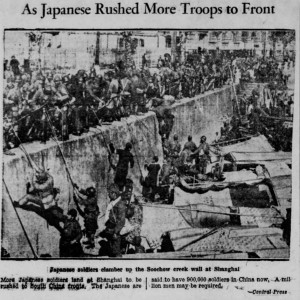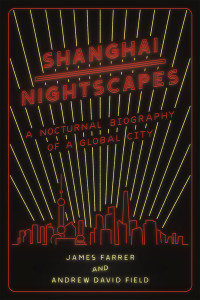Posted: September 14th, 2015 | 1 Comment »
An interesting new Penguin Special on Beethoven in China….
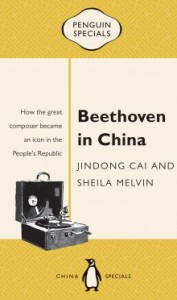
At the turn of the twentieth century, students returning from abroad brought Beethoven to China. The composer’s perseverance in the face of adversity and his musical genius resonated in a nation searching for a way forward. Beethoven remained a durable part of Chinese life in the decades that followed, becoming an icon to intellectuals, music fans and party cadres alike, and playing a role in major historical events from the May Fourth Movement to the normalisation of US-China relations. Jindong Cai, whose love for the musician began during the Cultural Revolution, and culture journalist Sheila Melvin tell the compelling story of Beethoven and the Chinese people.
Posted: September 12th, 2015 | No Comments »
Alan Geoffrey Yates (aka Carter Brown) was an English-born, Australian pulp writer who wrote in numerous genres under numerous non-de-plumes. He was translated into multiple languages and had multiple covers. Here are just a series of various covers for his 1962 pulp Hong Kong Caper…

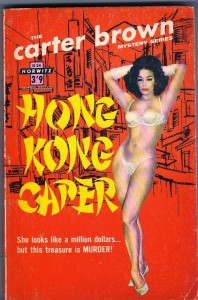
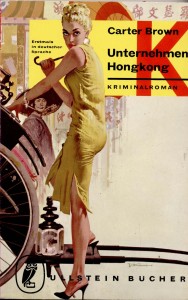


Posted: September 12th, 2015 | No Comments »
An interesting new book on life pre-Canton from Ng Chin-keong…..and a full review of the book on the Asian Review of Books site here….
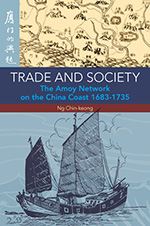
The book examines the social and economic changes in south Fukien (Fujian) on the southeast coast of China during late imperial times. Faced with land shortages and overpopulation, the rural population of south Fukien turned to the sea in search of fresh opportunities to secure a livelihood. With the tacit support of local officials and the scholar gentry, the merchants played the pivotal role in long-distance trade, and the commercial networks they established spanned the entire China coast, making the port city of Amoy (Xiamen) a major centre for maritime trade. In the work, the author discusses four interrelated spheres of activity, namely, the traditional rural sector, the port cities, the coastal trade and the overseas trade links. He argues that the creative use of clan organizations was key to the growth of the Amoy network along the coast as well as overseas.
Posted: September 11th, 2015 | 2 Comments »
Today, a tragic tale of a woman scorned and abandoned to her fate. I don’t know it all but I do know some of it. The story concerns Eroeda Sinitskaya, a 25-year-old stateless White Russian who lived in Shanghai and survived the war there. As far as can be gleaned from this article from March 1947 she must have, at some point, begun a relationship with an American soldier stationed in Shanghai following the city’s liberation in 1945. Eroeda acted as his interpreter. It would seem that he proposed and arranged for her to come to America to marry him – a classic GI Bride tale. Except that when Eroeda arrived at San Francisco ready to start her new life she found a letter waiting for her, from 27-year-old Former Army Sergeant Harry Le Roy Donaldson, telling her that instead of marrying her he was re-marrying his divorced wife. His letter to her read:
“I am truly very, very sorry. The world is full of good men who will be very lucky to have you for a wife.”
And so, instead of travelling on to Cameron, Missouri to start a new life Eroeda was kept at San Francisco and then returned to Shanghai. She graciously told the papers that she didn’t blame Donaldson, they had been separated for a year since he had left Shanghai. Eroeda did apply for a 6-month visitors permit to remain in America, though it was highly unlikely she would be granted one…..
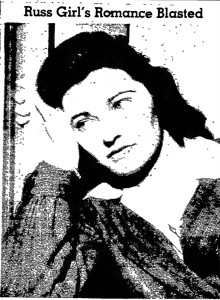
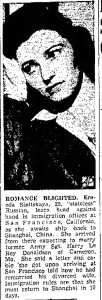
However, after she appeared in the papers the American Civil Liberties Union took up her case and she was eventually granted leave to remain. It was a hard fought case that went all the way to a House Judiciary Sub-Committee with the US Attorney General eventually agreeing to a stay of deportation. Her case was taken up by Rep. Havenner (D-California) who submitted a bill calling for her to be allowed to apply for naturalisation. He argued that she was able to produce both letters from Donaldson urging her to come to America, stating that when she did they would be married and copies of his army discharge papers and so therefore should be allowed to stay.
And then the happy ending…
 Donaldson
Donaldson
Eroeda had arrived in America in March 1947…the campaign to keep her in America had run through the summer and autumn. And then she met Dr. J Murray Luck, a professor of biochemistry at Stanford. They were married in November 1947 in a Russian Orthodox ceremony presided over the Most Rev Basil Shaposhnikoff….
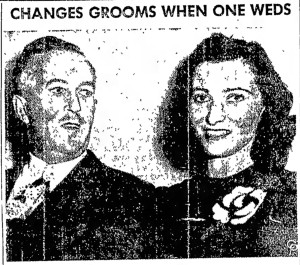

PS: I have to admit I rather like J. Murray Luck – he pops up again in 1950 in trouble for purchasing Henry Miller’s then scandalous Tropic of Cancer and Tropic of Capricorn on a trip to Paris and getting busted at US customs bringing the banned-in-the-USA books back with him. In the late 1950s he became an early and committed proponent of a woman’s right to abortion too, argued for greater teaching of contraception in schools and additional funds to research a contraceptive pill.
Posted: September 10th, 2015 | 1 Comment »
RAS Weekender / Book Launch
Saturday September 12th 2015
4pm for 4.15pm
Â
Tavern at the Radisson Xingguo Hotel
By Andrew Field & James Farrer
RAS Shanghai has the great pleasure of hosting the launch of this insightful and intriguing book about Shanghai’s nightlife by scholars Andrew David Field and James Farrer.
ABOUT THE BOOKÂ
The pulsing beat of its nightlife has long drawn travelers to the streets of Shanghai, where the night scene is a crucial component of the city’s image as a global metropolis. In Shanghai Nightscapes, sociologist James Farrer and historian Andrew David Field examine the cosmopolitan nightlife culture that first arose in Shanghai in the 1920s and that has been experiencing a revival since the 1980s. Drawing on over twenty years of fieldwork and hundreds of interviews, the authors spotlight a largely hidden world of nighttime pleasures—the dancing, drinking, and socializing going on in dance clubs and bars that have flourished in Shanghai over the last century.
The book begins by examining the history of the jazz-age dance scenes that arose in the ballrooms and nightclubs of Shanghai’s foreign settlements. During its heyday in the 1930s, Shanghai was known worldwide for its jazz cabarets that fused Chinese and Western cultures. The 1990s have seen the proliferation of a drinking, music, and sexual culture collectively constructed to create new contact zones between the local and tourist populations. Today’s Shanghai night scenes are simultaneously spaces of inequality and friction, where men and women from many different walks of life compete for status and attention, and spaces of sociability, in which intercultural communities are formed. Shanghai Nightscapes highlights the continuities in the city’s nightlife across a turbulent century, as well as the importance of the multicultural agents of nightlife in shaping cosmopolitan urban culture in China’s greatest global city.
ENTRANCE: Â Members 70 rmb, Non-members 100 rmb
Includes a glass of wine or soft drink
Posted: September 10th, 2015 | No Comments »
This headline accompanied the photograph I posted yesterday of fighting in Chapei (Zhabei) in November 1937 as terrified Chinese outside the international concession flocked into Frenchtown to seek sanctuary from the Japanese bombardment.

For the record the French Concession authorities reported that the number of persons by April 1938 who had arrived and were seeking refuge in the International Settlements was 150,000, including foreigners and displaced Chinese. 80,000 refugees were registered in Settlement camps – mostly comprised of Chinese from the interior of the country displaced by the Japanese invasion.
Posted: September 10th, 2015 | No Comments »
This picture appeared on the front pages of American newspapers in November 1937 – it was taken by an American cameraman close to the Japanese troops storming Shanghai’s Chapei (Zhabei) district after the August 1937 attack on the city. It shows clearly the level of total destruction wrought in the Chinese portions of Shanghai by the Imperial Japanese Army in the winter of ’37…..as a result 150,000 Chinese refugees crossed into the International Settlements in the ensuing six months….
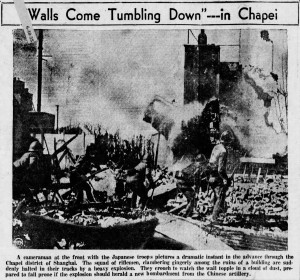
Posted: September 9th, 2015 | No Comments »
I think this is a rather remarkable picture – Japanese troops, brought to Shanghai as reinforcements after Tokyo’s attack on the city in 1937, arriving by boat and scaling the wall of the Soochow Creek (Suzhou Creek). It’s hard to work out exactly where this is on the Soochow Creek, but it must have been at low tide, and on the largely Japanese-controlled north side of the Creek (Hongkew side), with the Japanese commandeering sampans to take them from their troop ships to the bankside.
